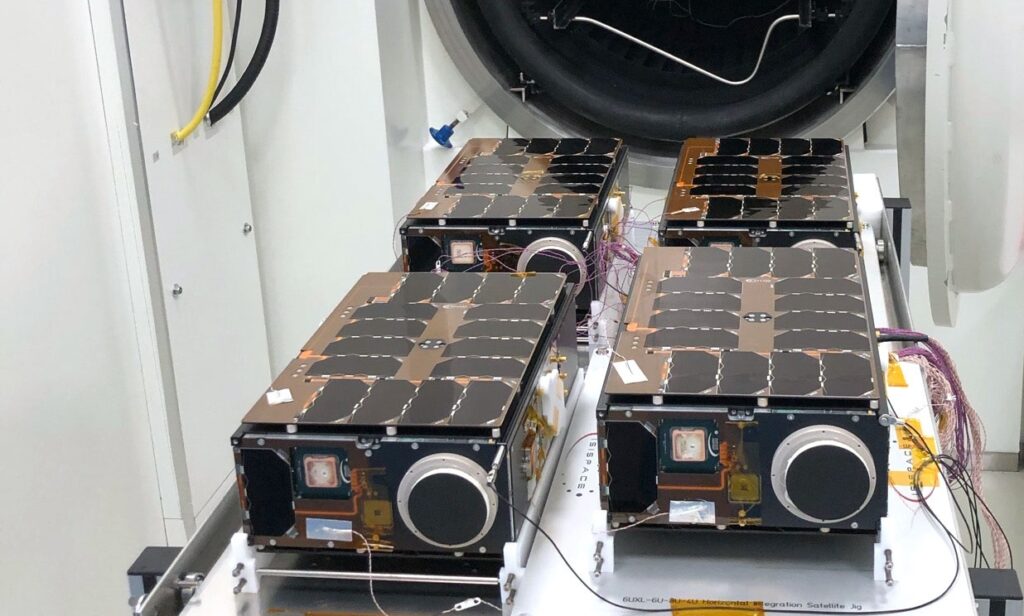News & Events
Another Five Spacecraft Launched With Our Flight Software Onboard

Kleos Space’s Polar Vigilance Mission/KSF-1 satellites
A SpaceX Falcon 9 rocket launched on 29th June, 2021, carried a total of 88 satellites into the orbit, including at least 5 latest GenerationOne deployments. We were privileged to provide the spacecraft software to Kleos Space’s Polar Vigilance Mission (KSF1) and the Faraday Phoenix satellite, built as part of In-Space Missions’ Faraday CubeSat programme to become a Service Mission Provider.
Kleos Space’s satellites detect and geolocate radio frequency transmissions to deliver a global picture of hidden maritime activity for enhanced intelligence capability. The KSF1 mission is a cluster of 4 satellites designed to enhance the company’s RF geolocation data delivered by the Kleos Scouting Mission, which was successfully launched in November 2020. The KSF1 spacecraft were built by Innovative Solutions In Space B.V. (ISISPACE) with the software system designed by Bright Ascension, using our innovative space software products to help keep development time short within tight project timelines.
The Faraday Phoenix mission, a re-flight of the original Faraday-1 satellite lost at launch, is part of In-Space Missions’ Faraday programme. Co-funded by ESA (European Space Agency), it enables multiple third-party payloads to ‘rideshare’ on a single satellite platform, providing low-cost access to space. Similar to its predecessor, the Faraday Phoenix satellite carries our FSDK flight software onboard, tying together the spacecraft’s subsystems and seamlessly interfacing with a large number of third-party payloads, including a host of software-defined radios of various types.
As they progress through their lives in orbit, both Faraday CubeSat and KSF1 satellites will make full use of our Mission Control Software and its tight integration with the flight software. This will help to significantly simplify, improve, and automate their mission operations.
“We are extremely proud of the hard work we have put in to help make these missions a success. ”
Peter Mendham, CEO at Bright Ascension
“Both Faraday Phoenix CubeSat and Polar Vigilance Mission had very tight project timescales, giving us less than six months for software development. But our unique modular approach allows for the complex flight software to be built quickly and effectively, which means we were able to support the lead times and deliver our cutting-edge spacecraft technology promptly and efficiently,” said Peter Mendham, CEO.
The Faraday Phoenix and KSF1 missions add to the list of successfully launched spacecraft with our software onboard, taking the current total to 24 satellites, with many more in development.